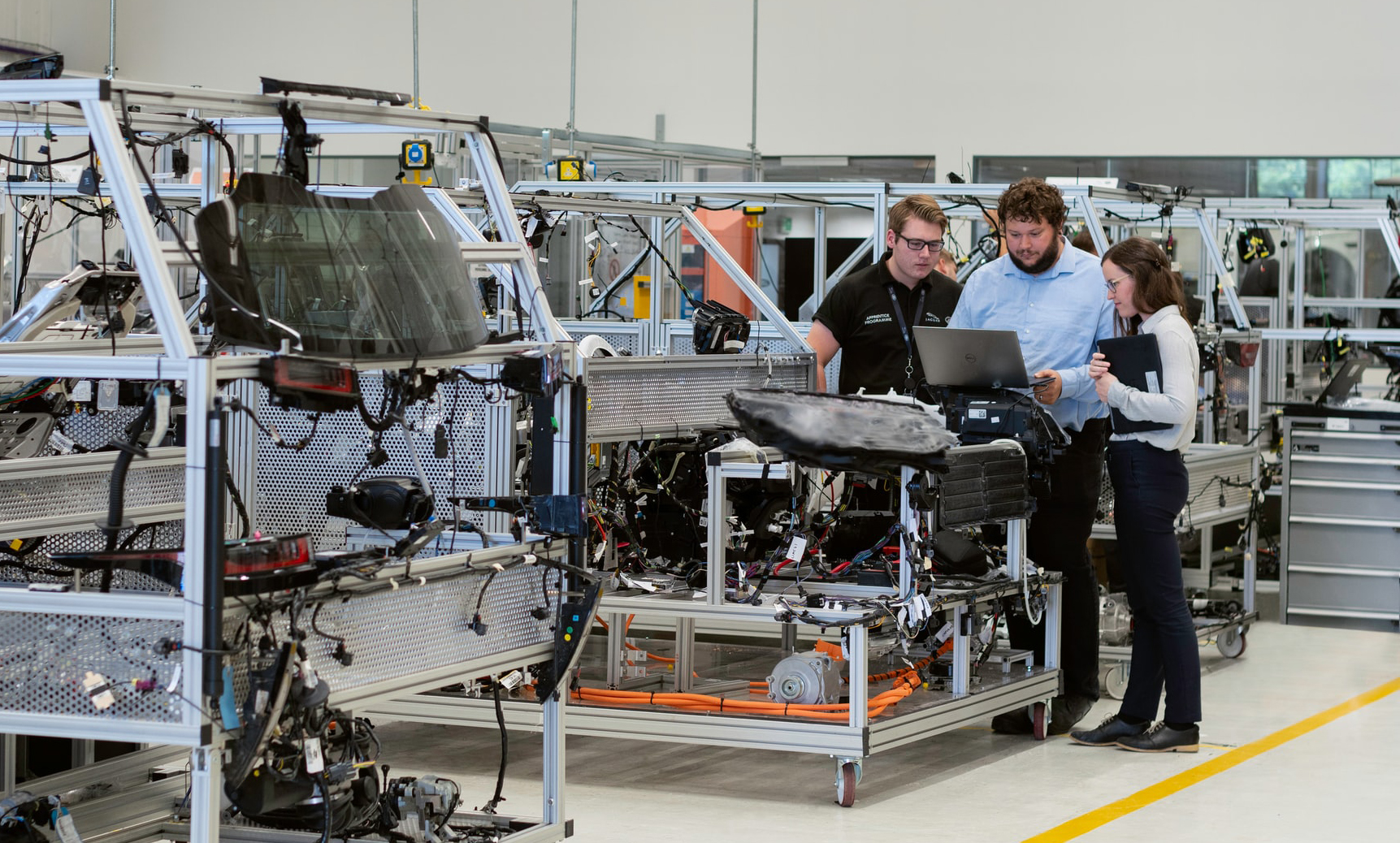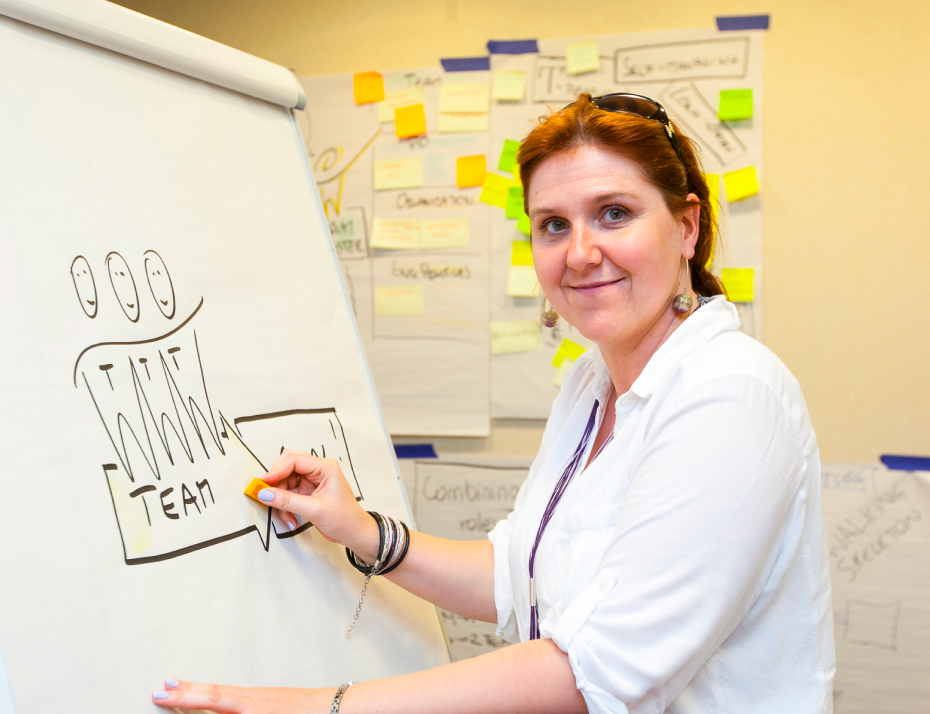Story from our Client
How to validate assumptions with prototypes
An electrical equipment company cut the time required to develop prototypes and collect feedback to 2 weeks.
The next industrial revolution has already begun and will not wait for those who are not ready for it.
![[Translate to English:] Agile for Hardware](/fileadmin/user_upload/main.jpeg)
The coexistence of hardware and software in one product creates a need to accelerate the speed of introducing and validating design changes.
Fast-changing user behavior and market globalization promote companies that can effectively collect data and use them to plan their development works.
The pace of evolution of construction and production tools, solutions, and technologies allows those who can quickly change the process and take advantage of new opportunities to succeed.
We will train your employees in modern project management techniques, product development, risk, and requirements management.
We will help you change your way of working and adapt it to operate in a fast-changing market.
We will show you how to empower your employees, improve the process, eliminate waste and adjust the product to the user's expectations.

Story from our Client
An electrical equipment company cut the time required to develop prototypes and collect feedback to 2 weeks.




selecting next areas and repeating steps 2-3

Joe introduced Agile to the automotive industry with the founding of the WIKISPEED Team, the first manufacturer of iteratively built and road-legal racing cars. Joe streamlined processes at Tesla with the Agile @ Tesla program. He also has experience in building small houses and robots.

Justyna is a specialist in process improvements and digital transformations, and her unique domain is the use of the Agile approach outside IT, especially in the area of hardware and service production. For over a decade, she was an engineer, manager and product owner at Motorola Solutions. She has cooperated with companies such as inPost, BSH, Kontakt Simon and Somfy.
Agile is a way of working derived from software industry, which is a response to the rapidly changing market expectations.
Key aspect of Agile approach is customer focus achieved by reduction of the time necessary to obtain feedback from the user and an adequate response to the collected information. In practice, this is achieved by delivering the product iteratively in short cycles.
The most popular process framework used by Agile companies is Scrum
Scrum is a process framework based on the PDCA cycle that facilitate iterative product development. The basis for operation is a stable cycle called Sprint, in which the team working on the product plans its work, implements the plan, and then inspects results and plans to improve the process.
Teamwork is the basis of all modern working methods. The interdisciplinary nature of the team is crucial in Agile. Enabling continuous daily cooperation of specialists from various fields allows for quick introduction and verification of complex changes in the product, improves quality and reduces losses related to the transfer of knowledge between departments. At the same time, the team must be small enough to maintain effective communication.
https://hbr.org/1986/01/the-new-new-product-development-game
Working in the Scrum model in a team, two additional roles are distinguished: Product Owner, who is responsible for the business value of the product and prioritization of work, and the Scrum Master, whose task is to support the team in improving the process.
Iteration (aka Sprint or Cycle) is a time-bounded period of work within which a product is manufactured. Each iteration begins with work planning and ends with its evaluation. The feedback obtained during the product evaluation and work progress at the end of the iteration is used in the next planning and enables both the process improvement and the right scope of work to be adjusted, providing the organization with a continuous learning cycle.
The iterative approach means gradual improvement, modification and reworking of the most important elements or functionalities of the product in accordance with current priorities.
The result of the iteration work is a prototype. A prototype is a physical product, a type of model that allows you to verify the assumptions made when planning iteration. The prototype, especially in the first stages of work, has a very limited set of functionalities, which expands as the work progresses. Modular designs with stable interfaces make it easy to modify prototypes. In order to be able to present a functional prototype at the end of each iteration, the organization must emphasize the time of prototyping. This may involve the use of specific tools, changing the model of cooperation with suppliers and adapting internal processes.
Well-known from the LEAN approach, continuous improvement is a pillar of the Agile approach. The improvements operate around:
Agile is a way of working derived from software industry, which is a response to the rapidly changing market expectations.
Key aspect of Agile approach is customer focus achieved by reduction of the time necessary to obtain feedback from the user and an adequate response to the collected information. In practice, this is achieved by delivering the product iteratively in short cycles.
The most popular process framework used by Agile companies is Scrum
Scrum is a process framework based on the PDCA cycle that facilitate iterative product development. The basis for operation is a stable cycle called Sprint, in which the team working on the product plans its work, implements the plan, and then inspects results and plans to improve the process.
Teamwork is the basis of all modern working methods. The interdisciplinary nature of the team is crucial in Agile. Enabling continuous daily cooperation of specialists from various fields allows for quick introduction and verification of complex changes in the product, improves quality and reduces losses related to the transfer of knowledge between departments. At the same time, the team must be small enough to maintain effective communication.
https://hbr.org/1986/01/the-new-new-product-development-game
Working in the Scrum model in a team, two additional roles are distinguished: Product Owner, who is responsible for the business value of the product and prioritization of work, and the Scrum Master, whose task is to support the team in improving the process.
Iteration (aka Sprint or Cycle) is a time-bounded period of work within which a product is manufactured. Each iteration begins with work planning and ends with its evaluation. The feedback obtained during the product evaluation and work progress at the end of the iteration is used in the next planning and enables both the process improvement and the right scope of work to be adjusted, providing the organization with a continuous learning cycle.
The iterative approach means gradual improvement, modification and reworking of the most important elements or functionalities of the product in accordance with current priorities.
The result of the iteration work is a prototype. A prototype is a physical product, a type of model that allows you to verify the assumptions made when planning iteration. The prototype, especially in the first stages of work, has a very limited set of functionalities, which expands as the work progresses. Modular designs with stable interfaces make it easy to modify prototypes. In order to be able to present a functional prototype at the end of each iteration, the organization must emphasize the time of prototyping. This may involve the use of specific tools, changing the model of cooperation with suppliers and adapting internal processes.
Well-known from the LEAN approach, continuous improvement is a pillar of the Agile approach. The improvements operate around:

Customer support
I will gladly answer all of your questions.